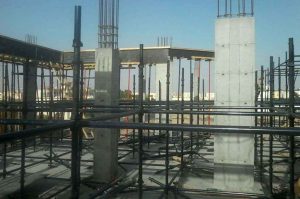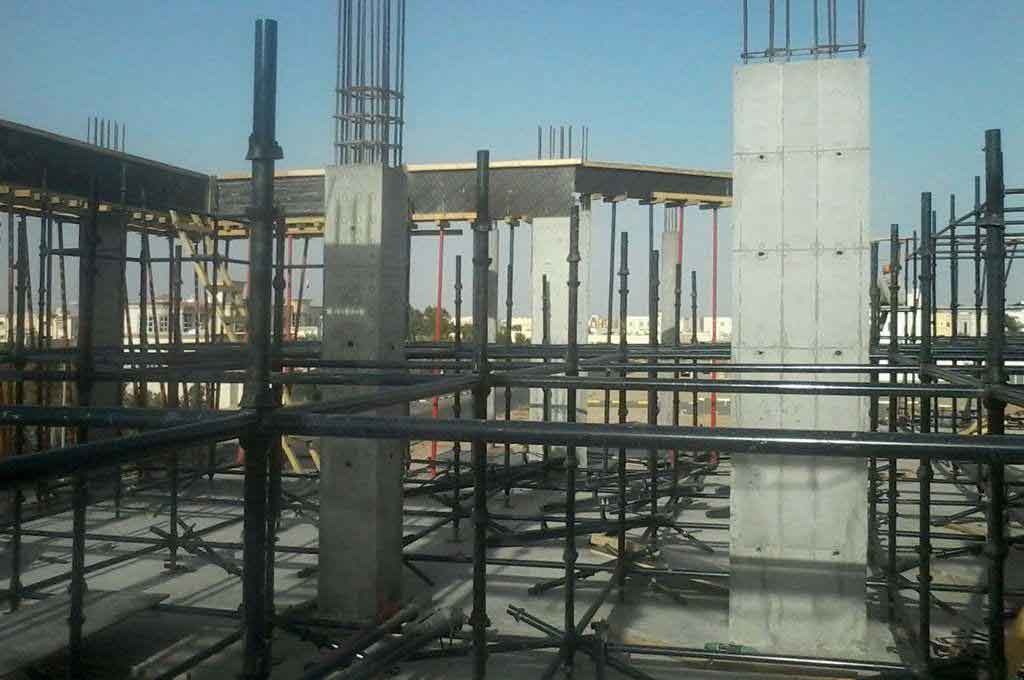Influence of formwork construction on quality of construction project

“Formwork engineering is a general term for a series of technical work and completion of the design, installation and dismantling of forms and supports for concrete forming”, which is the definition of formwork engineering in the quality acceptance specification. The formwork play a decisive role in ensuring the geometrical appearance and appearance quality of the concrete. Any mistake in any of the above steps will adversely affect the quality of the concrete structural engineering. The current “Construction Quality Acceptance Specification for Concrete Structure Engineering GB50204-2002” lists the defects in the appearance quality of some cast-in-place structures. These defects are mostly external and can be checked by the look and feel. However, as the quality of the project, the technical personnel should understand that: such quality defects may be caused by poor quality of the forms project. If serious defects occur in the main force parts of the concrete structure, it is not allowed by the specification, and the impact on the structure is also multifaceted. Do not analyze here, the author only analyzes the influence of formwork engineering on some intrinsic quality of cast-in-place concrete members.
- poor construction quality of the formwork project leads to deformation or sinking of the support system
The reasons for this kind of problem are many. After the appearance, it is reflected in the appearance of the concrete member, which is uneven at the bottom and has downward bending or collapse, which brings difficulties to the next decoration. Some may be concealed directly through the bottom decoration such as the ceiling, and some serious must be reworked. However, for the interior of concrete, the problems that arise are: The force-reinforcing steel bars are displaced due to the deformation of the formwork (possibly in all directions), and the steel bar skeleton is deformed accordingly, and the spacing of the reinforcing bars and the anchoring properties change accordingly. , adversely affecting the load carrying capacity of structural members. This kind of subsidence may occur in various stages of concrete pouring or after pouring. If it occurs in the stage of initial strength after initial concrete pouring or initial setting, especially if it is difficult to find, even if it sinks a small distance, the damage to the concrete structure is very large. - The poor quality of the formwork construction leads to concrete defects
The running (expansion) mode of the formwork in the project is more common and can occur in all kinds of concrete members. The above-mentioned formwork sinking is only one kind of vertical displacement of the forms. For fair-faced concrete, it can only pass after running (expanding) rework for processing, and for the concrete surface to be decorated, it is common practice in the project to dig the concrete in the “expansion” part. The hazards to the concrete members are:
(a) If the mastering is poor, it is very likely that the surface of the concrete will be excessively cut, which often leads to insufficient thickness of the concrete protective layer, and even the stirrups and the main ribs are exposed. After the chiseling, the construction will apply another layer of mortar on the surface ( Leveling), sometimes for the convenience of plastering, consciously remove the bulging part to the main rib. For this treatment, everyone is used to it, but the protective layer made of mortar is no longer the protective layer in the original sense.
(b) It is the influence of the solidity of the concrete near the protective layer of the steel. Because in the process of cutting, it is bound to vibrate the concrete near the protective layer, forming micro-cracks on the surface of the coarse aggregate of the protective layer, and the role of protecting the building formwork and its quality control layer is reduced. The thickness is often designed in the range of 15-30mm, which is relatively sturdy: When the chisel is cut, the joint between the concrete and the stressed rib can be peeled off to different extents, the bonding property between the steel and the concrete is affected, and the durability is reduced.
- The effect of improperly removing the formwork on the concrete members. In some of the two passes, due to the lack of formwork materials, in order to speed up the speed of the formwork, the adjacent lower floor formwork and brackets are often removed before the upper floor concrete is poured (even if the parts are removed) It is also unsafe to achieve the demoulding strength specified by the design or specification. This does not guarantee that at least two layers of the formwork support system are under the working surface, so that all the upper loads are applied to the beam and the surface. This kind of situation is more common in some brick wet structure residential projects. In addition, in the post-casting zone, if it is dismantled early (without independent support), a cantilever member will be formed, causing cracks or even fractures of the component, and the demoulding process. The impact of the template on the component impact or concentrated loading can also lead to cracks in the concrete component.
We are accustomed to the quality problems such as cracks in concrete members, and we are accustomed to finding reasons for the production, pouring, and maintenance of concrete, but we have neglected the influence of the above formwork on the quality of concrete.
To be continue…
BOFU plastic formwork system
